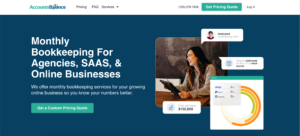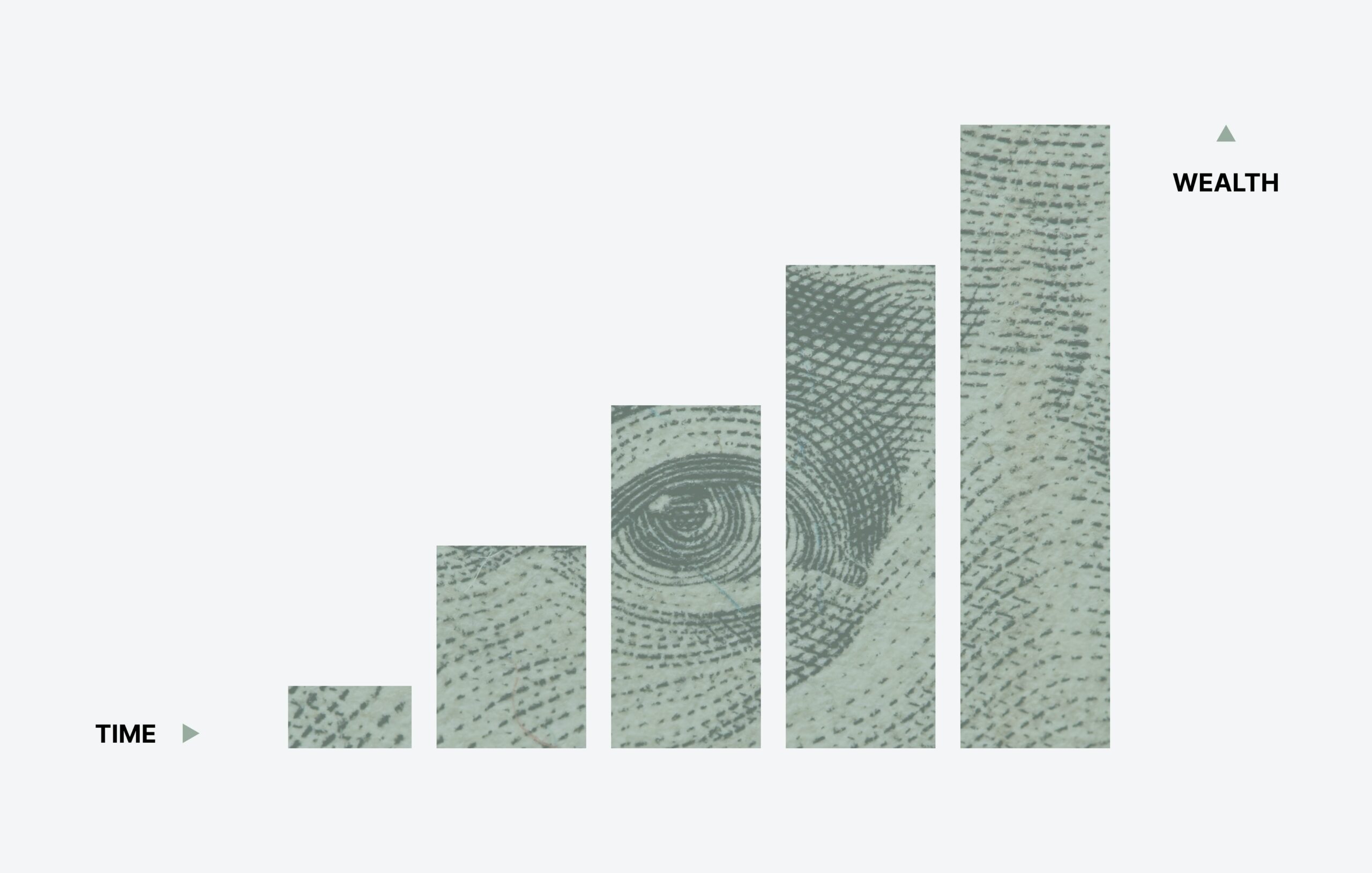
You may be asking “What is churn rate?”
“Any why is it important for my business?”
Good thing is…we’re here to explain everything you need to know about it.
My name is Connor Gillivan. I’m a 10+ yr entrepreneur that has scaled 5+ companies to 6, 7, and 8 figures in yearly revenue with an exit in 2019.
Churn has been a metric that we’ve tracked and it’s helped me and my business owner to understand how we can continue to improve our products and services.
In this article, we’ll break it all down for you.
Here’s what we’ll cover:
- What Is Churn Rate?
- How to Calculate Churn Rate
- What Is a Good Churn Rate?
- Churn Rate Examples
- What Is the Difference Between Churn and Attrition?
- What Is Monthly Churn Rate?
- What Is Annual Churn Rate?
- How to Improve Churn Rate
- Frequently Asked Questions
What Is Churn Rate?

Churn rate refers to the percentage of customers or subscribers who cancel or stop using your product or service over a given period.
It’s a crucial metric for any business, particularly in the subscription-based or recurring revenue models, as it directly affects your bottom line.
To put it simply, it measures customer attrition or the rate at which customers leave your business. It helps you gauge the health of your customer base and identify areas where improvements can be made.
The lower the churn rate, the better, as it indicates that your customers are satisfied and more likely to stick around.
How to Calculate Churn Rate

Calculating churn rate is a straightforward process that involves a few simple steps.
Here’s how you can calculate it:
- Determine the time period: Decide on the specific duration for which you want to calculate for. It could be a month, quarter, or year. The choice depends on your business model and the frequency of customer churn you want to monitor.
- Count the churned customers: Identify the number of customers who canceled or stopped using your product or service during the chosen time period. This includes both voluntary cancellations and involuntary churn, such as failed payments or account closures.
- Note the total customers at the beginning: Determine the total number of customers you had at the start of the chosen time period. This should include all active customers, whether they are paying or on a free trial.
- Calculate churn rate: Divide the number of churned customers by the total number of customers at the beginning of the time period. Multiply the result by 100 to get the result.Churn Rate = (Number of Churned Customers / Total Customers at the Beginning) * 100
For example, let’s say you had 1,000 customers at the start of the month and 50 of them canceled their subscriptions during that month. To calculate:
Churn Rate = (50 / 1,000) * 100 = 5%
So, in this scenario, your churn for that month would be 5%.
Remember, it’s crucial to be consistent with the time period you choose for calculating the metric. Comparing churn over the same duration will provide more accurate insights into your customer attrition trends.
What Is a Good Churn Rate?

Determining what constitutes a good churn can vary depending on factors such as your industry, business model, and target market.
However, as a general rule of thumb, a lower churn rate is typically considered desirable, indicating higher customer retention and satisfaction.
While it’s challenging to provide a one-size-fits-all benchmark, here are some guidelines to consider:
- Industry benchmarks: Research churn rate benchmarks specific to your industry. Different sectors have varying customer dynamics and expectations, which influence acceptable churn rates. For example, SAAS businesses often aim for churn below 5% annually, while industries like telecommunications may have higher average churn due to greater competition and market dynamics.
- Subscription-based businesses: If you operate a subscription-based business, a monthly churn between 2-5% is generally considered favorable. This means retaining 95-98% of your customers each month. However, remember that these numbers are not set in stone, and it’s crucial to compare against industry standards and aim for continuous improvement.
- Customer lifetime value: Consider the lifetime value of your customers. If your average customer lifetime is relatively long, a slightly higher churn may still be acceptable, as long as you are effectively acquiring new customers to sustain growth. It’s important to strike a balance between acquiring new customers and retaining existing ones.
- Cohort analysis: Analyze churn rates within different cohorts or segments of your customer base. This can provide insights into specific customer groups that may have higher or lower churn. For example, you may find that customers who have been with you for a shorter period exhibit higher churn, indicating a need to focus on improving early customer onboarding and engagement.
Remember, the goal is to continuously reduce churn and improve customer retention over time. Regularly monitor and track your churn rate, set realistic goals, and implement strategies to enhance customer experience and value.
Churn Rate Examples
-
Example 1: Low Churn
Let’s say you run a successful SAAS business in the project management industry. Over the past quarter, you had 500 customers, and only 10 of them canceled their subscriptions.
Churn Rate = (10 / 500) * 100 = 2%
In this case, you have achieved a low churn rate of 2%. This indicates that your customers are satisfied with your product and are more likely to remain loyal. It’s a positive sign for your business, as it allows for stable recurring revenue and reduces the need for constant acquisition efforts to replace lost customers.
-
Example 2: Moderate Churn
Now, imagine you own an e-commerce platform that provides a subscription service for personalized beauty products. In a given month, you had 1,000 active subscribers, and 50 of them decided to cancel their subscriptions.
Churn Rate = (50 / 1,000) * 100 = 5%
In this scenario, you have a moderate churn rate of 5%. While it’s higher than the previous example, it can still be considered acceptable within the e-commerce industry. However, it’s essential to keep an eye on the trend and implement strategies to minimize churn further. Analyzing customer feedback, improving product customization, or enhancing customer support can be effective approaches to reducing churn and boosting customer retention.
-
Example 3: High Churn
Now, let’s explore a scenario with a higher churn rate. Suppose you run a mobile app that offers a social networking service. In a given month, you had 2,000 active users, and 200 of them stopped using your app.
Churn Rate = (200 / 2,000) * 100 = 10%
In this case, you’re experiencing a high churn rate of 10%. This indicates a significant portion of your user base is leaving, which can be concerning for the sustainability of your app. It would be crucial to investigate the reasons behind the churn and identify areas for improvement. Enhancing the app’s features, addressing user concerns, and implementing effective user engagement strategies can help reduce churn and retain more users.
What Is the Difference Between Churn and Attrition?

Let’s understand the difference between these two terms:
- Churn: Churn refers to the rate at which customers or subscribers voluntarily cancel or stop using your product or service over a specific period. It typically indicates customer dissatisfaction or a decision to switch to a competitor or alternative solution. Churn is a critical metric for businesses, especially those operating on subscription models, as it directly impacts revenue and customer retention.
- Attrition: Attrition, on the other hand, encompasses the overall reduction or loss of customers over time, regardless of the reason. Attrition includes not only voluntary cancellations (churn) but also involuntary losses such as failed payments, expired contracts, or customer abandonment. Attrition represents a broader measure of customer disengagement or departure from your business.
In summary, churn specifically focuses on the voluntary departure of customers due to factors such as dissatisfaction or switching, while attrition encompasses all forms of customer loss, including both voluntary and involuntary factors.
What Is Monthly Churn Rate?
Monthly churn rate specifically refers to the percentage of customers or subscribers who cancel or stop using your product or service within a given month. It measures the rate of customer attrition on a monthly basis.
Calculating monthly churn involves dividing the number of customers lost during the month by the total number of customers at the beginning of the month. Multiply the result by 100 to obtain the churn percentage.
Monthly Churn Rate = (Number of Customers Lost in a Month / Total Customers at the Beginning of the Month) * 100
For example, let’s say you had 1,000 customers at the start of the month, and by the end of the month, 50 of them canceled their subscriptions or discontinued using your service.
Monthly Churn Rate = (50 / 1,000) * 100 = 5%
In this case, your monthly churn would be 5%.
What Is Annual Churn Rate?

Annual churn rate refers to the percentage of customers or subscribers who cancel or stop using your product or service within a year. It measures the rate of customer attrition over a 12-month period.
To calculate the annual churn rate, you divide the number of customers lost during the year by the total number of customers at the beginning of the year. Multiply the result by 100 to obtain the churn percentage.
Annual Churn Rate = (Number of Customers Lost in a Year / Total Customers at the Beginning of the Year) * 100
For example, if you had 1,000 customers at the start of the year, and by the end of the year, 100 customers canceled their subscriptions or discontinued using your service, the calculation would be as follows:
Annual Churn Rate = (100 / 1,000) * 100 = 10%
In this scenario, your annual churn would be 10%.
How to Improve Churn Rate
- Enhance customer onboarding and engagement:
- Provide a seamless onboarding experience to help customers quickly understand and derive value from your product or service.
- Implement proactive communication and personalized interactions to keep customers engaged throughout their journey.
- Offer tutorials, resources, and training materials to help customers maximize the benefits of your product.
- Prioritize customer satisfaction and support:
- Regularly gather feedback from customers to understand their needs and pain points.
- Address customer concerns promptly and provide excellent customer support.
- Proactively reach out to at-risk or dissatisfied customers to resolve issues and regain their trust.
- Offer product improvements and updates:
- Continuously innovate and enhance your product based on customer feedback and market trends.
- Regularly release updates, new features, and improvements to keep customers excited and engaged.
- Communicate product updates effectively to showcase the value customers can gain from them.
- Implement retention-focused pricing and incentives:
- Offer tiered pricing plans that align with different customer needs and budgets.
- Provide incentives such as discounts, loyalty rewards, or exclusive access to encourage customer loyalty.
- Consider annual or longer-term subscriptions with discounted pricing to incentivize customer commitment.
- Build a sense of community and value-added services:
- Foster a community around your product or service, where customers can connect, share experiences, and learn from each other.
- Provide value-added services, such as educational content, industry insights, or exclusive events, to go beyond the core offering and deepen customer relationships.
- Encourage customer advocacy and referrals by implementing referral programs or offering rewards for successful referrals.
Remember, reducing churn is an ongoing process that requires a customer-centric approach and continuous effort. It’s important to analyze and measure the impact of your strategies, iterate as needed, and stay proactive in understanding and meeting customer needs.
Frequently Asked Questions

1. What does 10% churn mean?
A churn of 10% means that 10% of your customer base has canceled or stopped using your product or service within a specific period, typically measured annually or monthly. It indicates a significant level of customer attrition and may suggest room for improvement in customer retention strategies. It’s important to analyze the reasons behind the churn and implement measures to reduce it, as higher churn rates can impact revenue, growth, and overall business stability.
2. What is a reasonable churn rate for a subscription business?
A reasonable churn rate for a subscription business can vary depending on factors such as industry, business model, and target market. However, as a general guideline, a monthly churn below 5% is often considered favorable. This means retaining 95% or more of your customers each month. However, it’s important to compare your churn rate against industry benchmarks and strive for continuous improvement in customer retention.
What Is AccountsBalance?

AccountsBalance is a monthly bookkeeping service specialized for agencies & SAAS companies.
We take monthly bookkeeping off your plate and deliver you your financial statements by the 15th or 20th of each month.
You’ll have your Profit and Loss Statement, Balance Sheet, and Cash Flow Statement ready for analysis each month so you and your business partners can make better business decisions.
Interested in learning more? Schedule a call with our CEO, Nathan Hirsch.
And here’s some free resources:
- Entrepreneur Bookkeeping Checklist
- Monthly Finance Meeting Agenda
- Accounting for Marketing Agencies: A Complete Guide
- 11 Marketing Agency Financials To Track & Understand
- SAAS Accounting 101: The Basics Business Owners Need to Know
In Summary
Does churn rate make more sense now?
As a business owner, it’s critical that you track your churn and aim to improve it over time.
The lower the churn, the better.
Which means that customers are happy and sticking with you/your product.
If you still have questions about churn, reach out to us at [email protected].
Cheers!









